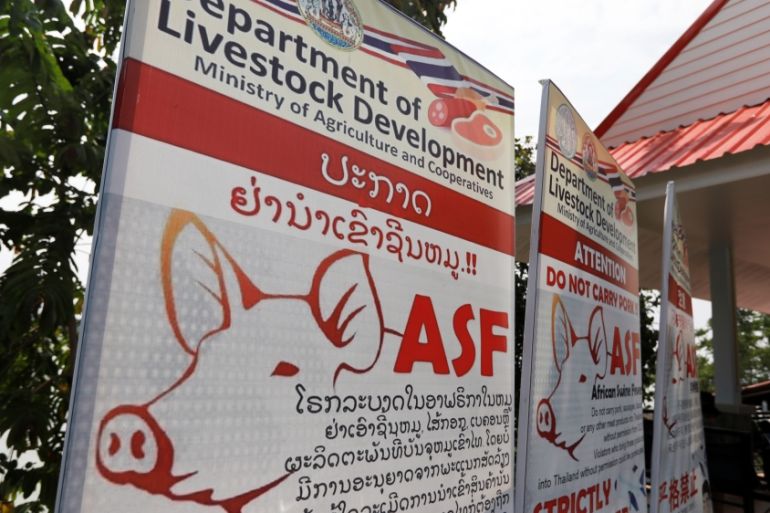Swine fever in China poses big risk to food markets, report says
Outbreak of fatal pig disease is a major problem for agricultural markets, with pork-supply volatility continuing.

The spread of a deadly pig disease in China that has disrupted the world’s biggest pork market is one of the major risks to a well-supplied global agricultural sector, said a report released Monday by the Organisation for Economic Co-operation and Development (OECD) and the United Nations’ Food and Agriculture Organization (FAO).
African swine fever was highlighted in the two organisations’ annual agricultural outlook, which covers the decade ahead.
Keep reading
list of 4 itemsWhy are British farmers pleading for a universal basic income?
Why are some US food producers using antibiotics in meat again?
Photos: Chocolate prices rise as West Africa’s cocoa crisis deepens
The report forecast broadly stable agricultural markets in the 2019-2028 period, as productivity gains are set to help output keep pace with rising demand for food, livestock feed and crop-based biofuels.
China is struggling with swine fever, which has spread across much of the country over the past year. There is no cure or vaccine for the contagious disease, which is often fatal for pigs but harmless for humans.
The FAO/OECD forecast a five percent fall in Chinese pork output this year, while pork imports were forecast to rise to almost 2 million tonnes from an average 1.6 million tonnes per year in 2016-2018.
In the 10-year outlook report, pork production is projected to recover in 2020 and reach 2018 levels before resuming a longer-term growth path supported by robust underlying demand.
‘Contain the outbreak’
But African swine fever’s impact was still unclear compared with the impact in China and other parts of Asia of threats such as fall armyworms, a crop pest that the report said “can be largely controlled” using pesticides and other measures.
“Measures to contain the [swine fever] outbreak are assumed to moderately depress global pork production in the short term,” said the FAO/OECD report. “As their success is uncertain the medium term impact of the epidemic may become more severe than currently anticipated.”
Other observers have projected a steeper fall in Chinese pork production as herds are culled. Cases are thought to be under-reported, though authorities have said outbreaks are slowing and output is recovering.
The FAO/OECD forecast lower pork prices in real terms in 2019-2028 for most major agricultural commodities, a trend the organisations already predicted in previous reports.
In addition to disease threats and perennial weather risks, another big issue for agricultural markets was rising tensions in the United States-China trade dispute.
Asia would continue to drive global demand for pork, while poultry would lead global growth in meat demand, accounting for half of additional consumption in the next 10 years, the report estimated.
“Historically, lower product prices have contributed to making poultry and pigmeat the favourite choice for consumers in developing countries,” the report said. “But rising income levels are allowing those same consumers to gradually diversify their meat consumption to more expensive meat varieties such as beef and lamb.”
Dairy, however, was expected to be the single fastest-growing livestock sector, fuelled by brisk demand in India and Pakistan, the FAO/OECD said.